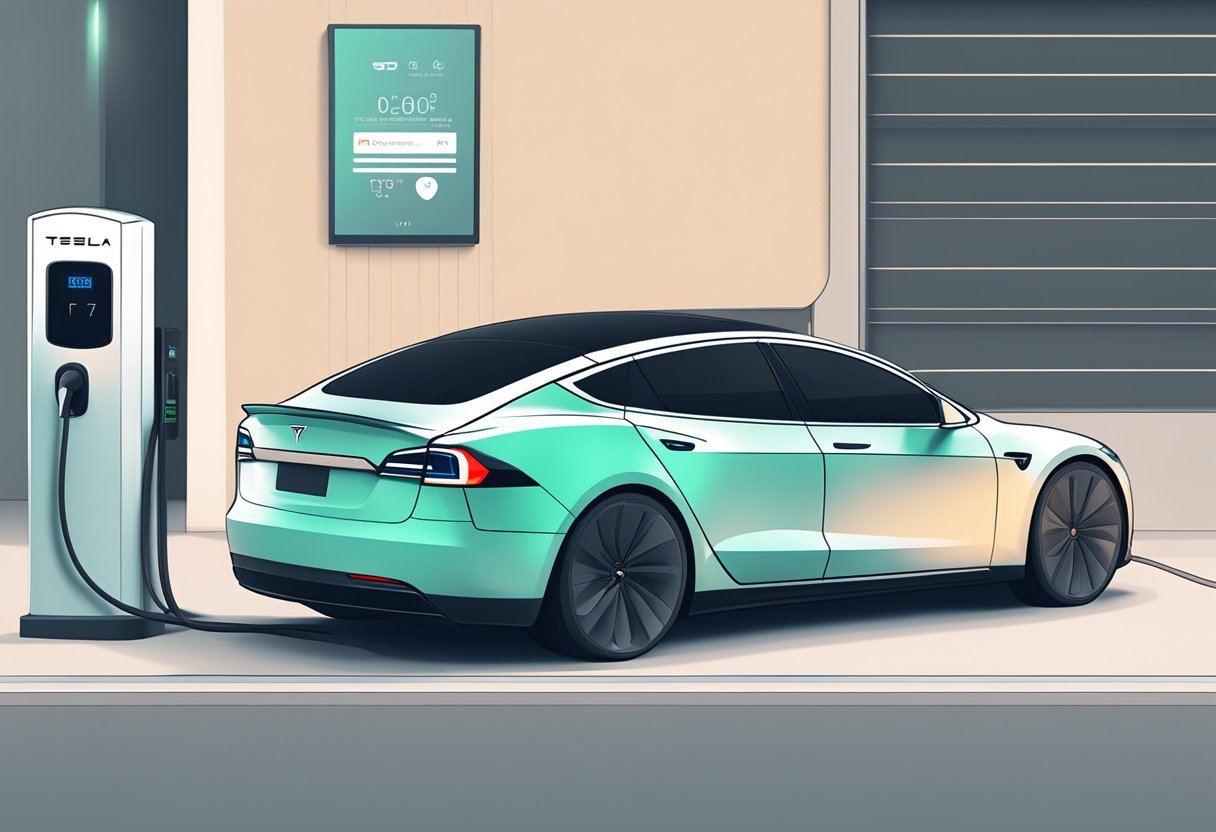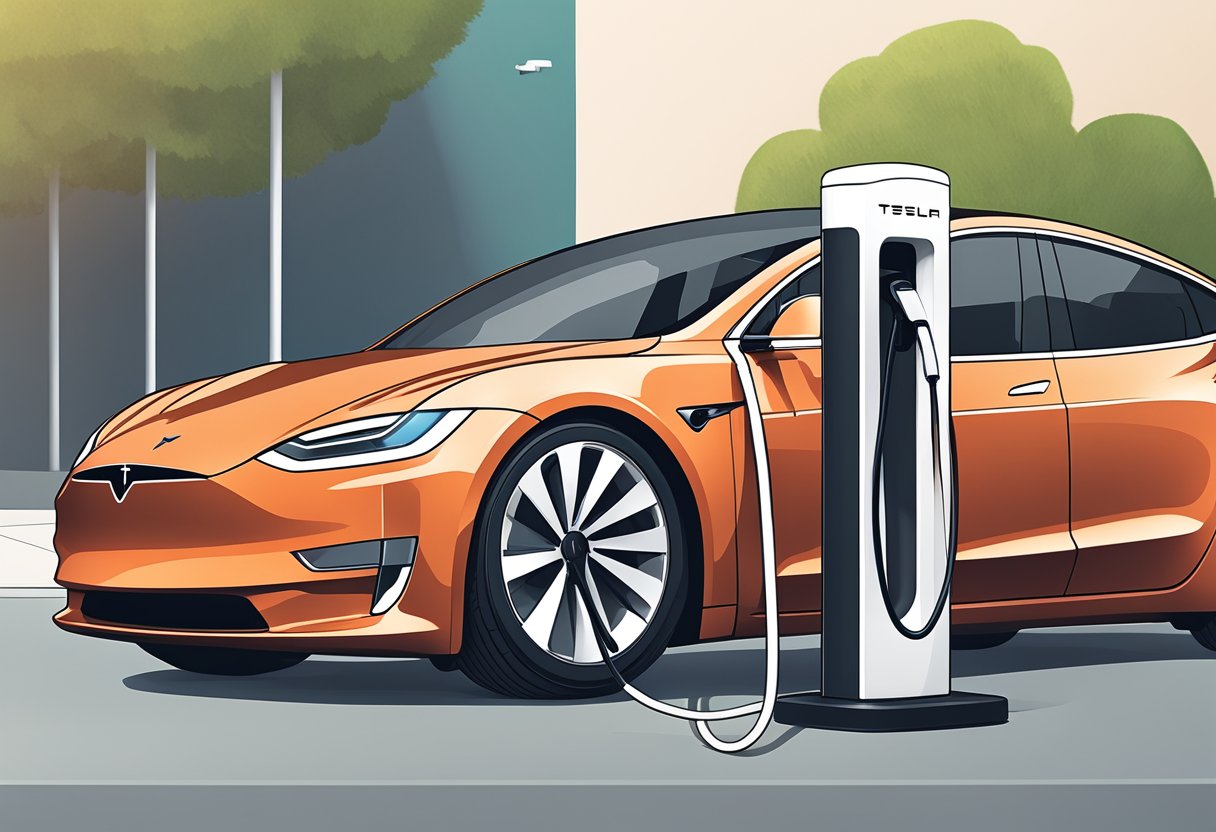Deciding on the ideal charging level for your Tesla can have significant impacts on your daily use and the longevity of your battery. Teslas, like all electric vehicles, rely on lithium-ion batteries, which have specific characteristics and recommended practices to ensure their health and efficiency. Typically, electric vehicle manufacturers suggest maintaining your battery’s state of charge within certain limits to balance daily driving needs with battery preservation.

Charging your Tesla to 80% is often seen as a sweet spot for daily use. It strikes a balance between giving you sufficient range for most day-to-day activities and preserving the battery’s lifespan. Charging beyond 80% is usually only necessary for long trips where the additional range is needed.
Moreover, updates to the Tesla software in the summer of 2023 showed a change in the manufacturer’s recommended daily charge limit, suggesting 80% as a guideline. This percentage keeps the battery within a safe range to avoid unnecessary stress and degradation. While it may be tempting to charge your Tesla Model to 90% or even 100% to maximize range, doing so on a regular basis can lead to a decrease in the overall usable capacity of the battery over time, as suggested by user observations and Tesla’s evolving recommendations. Consider your actual range requirements and charging behavior when choosing the level to which you charge your Tesla, keeping in mind these guidelines for the best balance of battery health and driving needs.
Understanding Tesla’s Battery and Charging Fundamentals
When it comes to charging your Tesla, understanding the battery technology and the recommended charging practices is crucial for maintaining battery health and longevity.
Lithium-Ion Battery Technology
Tesla vehicles use advanced lithium-ion batteries that offer a significant energy density, providing your electric vehicle (EV) with a reliable power source. This type of battery balances energy capacity with the efficiency of converting and storing electrical energy chemically. Your Tesla’s battery health depends on several factors, including charging habits and the way the battery is maintained.
Optimal Charging Percentage Debate
The question of whether to charge your Tesla to 80% or 90% revolves around preserving the battery’s longevity and reducing battery degradation. Charging to 100% is generally not recommended for daily use because it can lead to more rapid degradation. A charge limit of 80% is suggested by some as it is considered a sweet spot for extending battery life while providing sufficient range.
- 80% Charge: Balances usability with protection against degradation.
- 90% Charge: Offers more range, while still providing a degree of battery protection.
Battery Display: Your Tesla will show the charge percentage on the battery display, allowing you to monitor and adjust your charge limit as needed.
Tesla’s Recommended Charging Practices
Tesla suggests setting a daily charge limit to optimize the battery’s performance. While Tesla batteries are engineered for daily charging and discharging, keeping the battery between 50% and 90% generally ensures efficient energy use and extended battery life.
- Daily Charging: Maintain between 50% and 90% for regular use.
- Standard Range Plus: Depending on your specific model, like the Standard Range Plus, Tesla may have tailored advice for charging habits.
By adopting the recommended charging practices, you ensure the efficiency of your battery and its long-term health, which is an essential aspect of your Tesla’s overall performance and value.
Analyzing Charging Habits and Their Impact on Battery Health
Proper charging can prolong the life of your Tesla’s battery. Influential factors include the frequency of charges and the levels to which the battery is charged.
Daily Charging vs. Long Road Trips
For your daily commute, maintaining a state of charge (SoC) between 50% and 80% helps preserve battery health. Long road trips occasionally necessitate charging to 90% or more, but this should not be a regular practice as it can stress your Tesla’s battery over time.
Charge Level Management for Commuters
As a commuter, you typically know your daily range requirements. Charging your Tesla to meet just your work commute needs, without exceeding an 80% SoC, can help maintain battery health. This practice avoids unnecessary strain on the battery and conserves its longevity.
Supercharging and Its Effects on Battery Longevity
Supercharging provides a fast way to charge your Tesla, especially useful during long road trips. While convenient, frequent supercharging can accelerate battery wear. It’s advisable to use Superchargers sparingly and rely more on home charging for your routine needs.
Best Practices for Charging Your Tesla

The life of your Tesla’s battery is influenced by how you charge it. Understanding the most effective ways to manage charging can therefore enhance both longevity and performance.
Setting the Right Charge Limit
Your Tesla’s onboard computer allows you to set a charge limit to control the state of charge. For daily driving, consider charging to 80% to balance between adequate range and maintaining battery health. If you require more range for longer trips, setting the charge limit to 90% is an option. Use the Tesla app to adjust the charge limit conveniently from your phone.
Home Charging vs. Supercharger Usage
For everyday use, charging your Tesla at home using a Wall Connector installed in your garage is recommended. This method is convenient and usually enough to keep your battery charged within the optimal range of 80-90%. Superchargers should be used sparingly since they are designed for rapid charging while on the road. High-frequency Supercharger use can lead to accelerated battery degradation, especially when consistently charging to a high state of charge.
Maximizing Battery Life and Performance
To ensure the longevity of your battery and optimal performance, avoid keeping it at a high state of charge for extended periods. If your Tesla is charged to 100%, plan to drive it soon after to avoid battery stress. Regenerative braking is most effective when the battery is not at full capacity, so keeping the charge level at or below 90% helps you make the most of this feature. Regularly monitoring and adjusting your charging habits based on usage patterns is vital for sustaining battery health.

